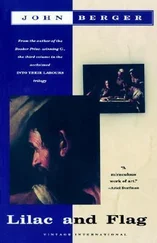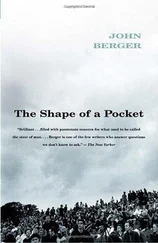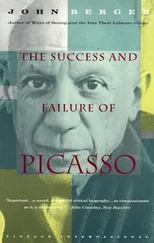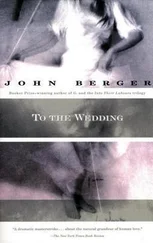The title Permanent Red was never meant to imply that I would not change. It was to claim that I would never compromise my opposition to bourgeois culture and society. In agreeing to the re-issue of the book I repeat the claim.
John Berger, 1968/1979
If you take a long-term historical view, ours is obviously a period of mannerism and decadence. The excessive subjectivity of most of our art and criticism confirms this. The historical and social explanations are not hard to find. It may be unpopular but it is not stupid to condemn works as bourgeois, formalist and escapist.
If, on the other hand, you take a very limited view it is possible to sympathize with almost all artists. If you accept what they themselves are trying to do, you can admire their effort. The work is then no longer proof of the validity of the artist’s intentions: his intentions have to prove the validity of his work. If you want to know what it feels like to be X, his paintings will tell you as much as anything else ever will. Accept that it is necessary for him to create a kind of tidal world of flux in which solidity, weight and identity are all sucked away, and then his paintings are certainly impressive.
The limitation of the first approach is that it tends to be over-mechanical. To take a long-term historical view you must stand outside your own time and culture. You must base yourself on the past, in an imaginary future or in the centre of an alternative culture. Your general opinion will probably be right. But you will almost certainly be blind to the processes by which your own period is changing itself. You will tend to see the dramatic break between the culture with which you identify yourself and the culture that surrounds you more clearly than you will see the dialectic leading up to and away from that break. You would, for instance, have seen that Surrealism was decadent but you would have failed to understand how it nourished Eluard who later opposed all decadence. It is an approach that assumes that your own period is finished rather than continuous.
The limitation of the second way of approach is its subjectivity. Intentions count for more than results. You judge the distance travelled instead of the distance still necessary to travel. You think as though history begins afresh with each individual. Your mind is open — but anything can enter it and so seem positive. You will admit the genius and the fool — and not know which is which.
So what is required is a combination of both approaches. Then you will be fully equipped to recognize that rare transformation which, when it happens, allows an artist’s pursuit of his personal needs to become a pursuit of the truth. You will have the historical perspective necessary to evaluate the truth he discovers, and you will have the imaginative appreciation necessary to understand the route he must take to travel towards his discovery. In theory, such a combination would equip the ideal critic. But in fact it is impossible.
The two approaches are mutually opposed. You are demanding that the critic is simultaneously in one place (in X’s imagination) and everywhere (in history). You are casting him for the role of God. Which is, of course, the role most critics cast for themselves. Their one concern and one fear is that they will fail to understand the next genius, the latest discovery, the newest trend. Yet they are not God. So they wander about, looking for they know not what, and always believing that they have just found it.
Proper criticism is more modest. First, you must answer the question: What can art serve here and now? Then you criticize according to whether the works in question serve that purpose or not. You must beware of believing that they can always do so directly. You are not simply demanding propaganda. But you need not fall over backwards in order to avoid being proved wrong by those who later take your place. You will make mistakes. You will miss perhaps the genius who finally vindicates himself. But if you answer your initial question with historical logic and justice, you will be helping to bring about the future from which people will be able to judge the art of your own time with ease.
The question I ask is: Does this work help or encourage men to know and claim their social rights? First let me explain what I do not mean by that. When I go into a gallery, I do not assess the works according to how graphically they present, for example, the plight of our old-age pensioners. Painting and sculpture are clearly not the most suitable means for putting pressure on the government to nationalize the land. Nor am I suggesting that the artist, when actually working, can or should be primarily concerned with the justice of a social cause.
Shut the door of the Pope’s chapel,
Keep those children out.
There on that scaffolding reclines
Michael Angelo.
With no more sound than the mice make
His hand moves to and fro.
Like a long-legged fly upon the stream
His mind moves upon silence.
Yeats understood the necessary preoccupations of the artist.
What I do mean is something less direct and more comprehensive. After we have responded to a work of art, we leave it, carrying away in our consciousness something which we didn’t have before. This something amounts to more than our memory of the incident represented, and also more than our memory of the shapes and colours and spaces which the artist has used and arranged. What we take away with us — on the most profound level — is the memory of the artist’s way of looking at the world. The representation of a recognizable incident (an incident here can simply mean a tree or a head) offers us the chance of relating the artist’s way of looking to our own. The forms he uses are the means by which he expresses his way of looking. The truth of this is confirmed by the fact that we can often recall the experience of a work, having forgotten both its precise subject and its precise formal arrangement.
Yet why should an artist’s way of looking at the world have any meaning for us? Why does it give us pleasure? Because, I believe, it increases our awareness of our own potentiality. Not of course our awareness of our potentiality as artists ourselves. But a way of looking at the world implies a certain relationship with the world, and every relationship implies action. The kind of actions implied vary a great deal. A classical Greek sculpture increases our awareness of our own potential physical dignity; a Rembrandt of our potential moral courage; a Matisse of our potential sensual awareness. Yet each of these examples is too personal and too narrow to contain the whole truth of the matter. A work can, to some extent, increase an awareness of different potentialities in different people. The important point is that a valid work of art promises in some way or another the possibility of an increase, an improvement. Nor need the work be optimistic to achieve this; indeed, its subject may be tragic. For it is not the subject that makes the promise, it is the artist’s way of viewing his subject. Goya’s way of looking at a massacre amounts to the contention that we ought to be able to do without massacres.
Works can be very roughly divided into two categories, each offering, in the way just described, a different kind of promise. There are works which embody a way of looking that promises the mastering of reality — Piero, Mantegna, Poussin, Degas. Each of these suggests in a different way that space, time and movement are understandable and controllable. Life is only as chaotic as men make it or allow it to be. There are other works which embody a way of looking whose promise lies not so much in any suggested mastery, but rather in the fervour of an implied desire for change — El Greco, Rembrandt, Watteau, Delacroix, Van Gogh. These artists suggest that men in one way or another are larger than their circumstances — and so could change them. The two categories are related, perhaps, to the old distinction between Classic and Romantic, but they are broader because they are not concerned with specific historical vocabularies. (It is obviously absurd to think of El Greco as a romantic in the same sense as Delacroix or Chopin.)
Читать дальше












